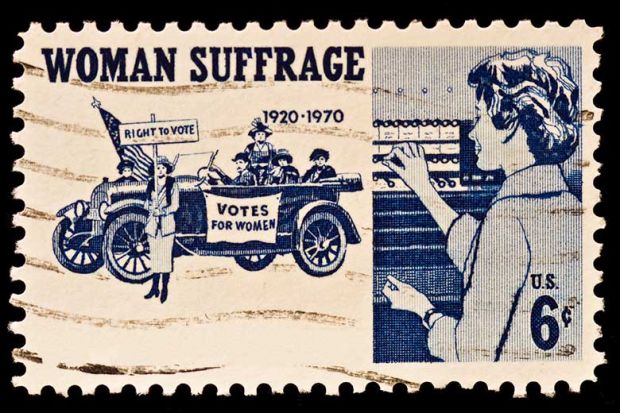Elizabeth Crawford is an independent scholar, author and seller of antiquarian books, postcards, pamphlets and ephemera by and about women. Her best-known book, The Women’s Suffrage Movement: A Reference Guide (1999), has become the standard reference book about the women’s suffrage movement in Britain, widely consulted by both academics and the general public. Art and Suffrage, the first book of its kind in the field, is destined to fulfil a similar role. Drawing upon a wide range of sources in a large number of archives, memoirs, wills and newspapers, it draws fascinating pen portraits of suffrage artists who were mainly women and remain largely unknown.
Most of these artists were professionally trained, having attended either provincial or London art schools, often with additional time spent in Paris. However, many faced an uphill struggle when developing a career, a move that required exceptional talent, determination and usually family money.
Overall, the artists fell roughly into three main groupings – those who were members of the Artists’ Suffrage League; those who joined the Suffrage Atelier; and non-affiliated others. Many were also members of the main suffrage societies – the Women’s Social and Political Union (WSPU), the National Union of Women’s Suffrage Societies (NUWSS), the Women’s Freedom League (WFL) or the Women’s Tax Resistance League, formed in 1910 to protest against the injustice of women having to pay taxes when they lacked political representation. Yet even if not joining protesters in any of these main societies, all the artists discussed here contributed to the suffrage cause in a variety of ways: designing and embroidering banners to be carried in processions to Parliament, making decorations for meetings and bazaars, painting portraits, designing postcards, drawing cartoons and making posters for billboards.
We find here entries on some of the women whose names pop up in suffrage literature, such as the Brackenbury sisters, Marie and Georgina. In 1913, their large home in Campden Hill Square became known as “Mouse Castle” since it gave shelter to imprisoned suffragettes released under the notorious “Cat and Mouse Act”. Marie drew cartoons for the suffrage cause and in 1927 painted a well-known portrait of Emmeline Pankhurst, the WSPU’s founder.
The talented Mary Lowndes, on the other hand, a founding member of the Artists’ Suffrage League, was mainly associated with the NUWSS. She designed postcards and especially colourful banners. But the names of many other suffrage artists have often been hidden by history, such as Margaret Morris whose design for the cover of Ethel Smyth’s rousing anthem, “The March of the Women”, is frequently reprinted. Agnes (Effie) Shaw, whose drawings appeared in the NUWSS’ newspaper The Common Cause is another forgotten artist, as is Kathleen Ainslie, whose children’s book Votes for Catherine Susan and Me has delightful paintings of wooden peg-type suffrage dolls. The few male contributors listed here include Duncan Grant and Alfred Pearse, whose posters and cartoons were frequently displayed in their day.
Meticulously researched with beautiful coloured illustrations, Art and Suffrage rescues from obscurity the lives of many suffrage artists and their contribution to a woman’s movement that has been unparalleled in British history.
June Purvis is professor emerita of women’s and gender history at the University of Portsmouth.
Art and Suffrage: A Biographical Dictionary of Suffrage Artists
By Elizabeth Crawford
Francis Boutle Publishers 248pp, £20.00
ISBN 9781999903732
Published 10 January 2018
后记
Print headline: Not just purple, green and white




